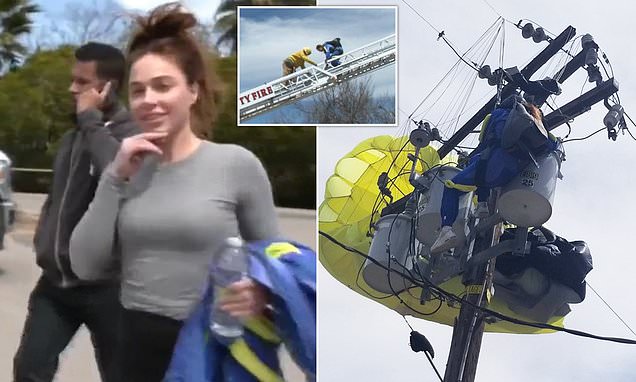A crescent moon rises along with planets Venus, Mars and Jupiter on June 24, 2022, in Toronto, Ontario. Photo: Gary Hershorn/Getty Images
Look to the sky this week for a rare chance to see five planets lined up for a “parade of planets” or “planetary alignment.”
Driving the news: Tuesday is the best day to see Mercury, Jupiter, Venus, Uranus and Mars line up near the moon, NASA astronomer Bill Cooke told the AP.
- The planets will stretch from the horizon line to around halfway up the night sky, AP reports.
- The alignment became visible late last week and is expected to be visible for a couple of weeks, according to the astronomy website and app Star Walk.
- It’s a rare chance to see Uranus, which isn’t usually visible, Cooke told AP.
Context: There are different kinds of planetary alignments with mini alignments including three planets, small four planets and large five or six planets, according to Star Walk.
- Small and mini are more common with three small alignments expected in the coming months (April 11, April 24 and May 29), Star Walk notes.
- The last five-planet alignment was visible in June 2022.
What time can you see the planets align?
To see this five-planet alignment, look to the western horizon at sunset, experts advise.
- Sunset times vary and can be calculated using Timeanddate.com's sun calculator.
- "If you go outside, right at sunset, right after the sun goes down and look west, you'll see these planets strung out in a line extending about 50 degrees or so," Cooke told CBS News.
Watch planets align
The time window to see the planets, visible under the crescent moon, is short, Cameron Hummels, a computational astrophysicist at the California Institute of Technology, told CNN.
- Even in urban areas with significant light pollution, much of the alignment should be visible to the naked eye but binoculars or a telescope should make it easier to see the planets.
- Cooke said Jupiter, Venus and Mars will be easy to see but binoculars might be needed to view Mercury and Uranus.
Meanwhile, former Apollo astronaut Buzz Aldrin tweeted about the alignment and said he’s “always on the lookout for some great star-gazing opportunities.”
- “Tuesday might be a night to grab the binoculars and catch a glimpse of a pretty rare five-planet alignment of Mercury, Jupiter, Venus, Uranus, and Mars,” Aldrin said on Twitter Monday. “Here’s hoping the skies will remain clear!”
What's next: The next large alignment is June 17 when Mercury, Uranus, Jupiter, Neptune and Saturn align. It'll be a morning alignment, according to Star Walk.
More from Axios:
- Launching rockets isn't enough for space companies
- Venus' bright scientific future is at risk
- NASA reveals spacesuit for new Moon mission that better fits women
Source: Read Full Article



